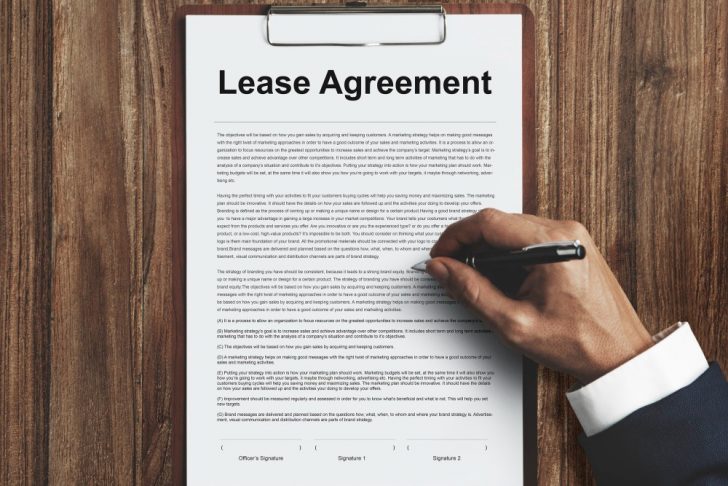
How Legally Binding Is a Lease?

How legally binding is a lease? Understanding how legally binding a lease is becomes crucial for landlords when considering rental agreements. A lease agreement is more than just a formality; it’s a contract that binds both landlord and tenant to agreed-upon terms. Knowing the essentials of what makes a lease legally binding can save landlords from potential disputes and legal challenges.
The Importance of a Written Lease Agreement
A lease agreement is a formal document outlining the rights and obligations of both the landlord and the tenant. It must include essential details such as the rental property’s location, dates of tenancy, rent amount, and payment methods. The agreement becomes legally binding once all parties sign it, making it enforceable in a court of law.
Ensuring Compliance With Legal Standards
To be legally binding, a lease must comply with local, state, and federal laws. Landlords should always consult legal professionals to ensure the lease meets all legal requirements in their area. This step is vital because non-compliance could render the lease unenforceable, exposing the landlord to legal risks.

rawpixel.com | Freepik | A lease agreement is a formal document outlining the rights and obligations of the landlord and the tenant.
The Lease Signing Process
Creating a legally binding lease involves several crucial steps that both landlords and tenants must follow. Each step ensures the lease agreement is clear, fair, and enforceable.
1. Forming the Lease Agreement
The first step in the lease signing process is drafting a comprehensive lease agreement. This document should include all essential terms, such as the rental location, dates of tenancy, rent amount, payment methods, and deposit requirements. The agreement should also specify the utilities provided and any other conditions that the landlord expects the tenant to follow during their stay.
2. Compliance With Legal Standards
Before the lease can be signed, it must be checked for compliance with local, state, and federal laws. This step is essential because any non-compliance can result in the lease being declared unenforceable. Consulting a legal professional is advisable to ensure that all terms meet the necessary legal requirements in the specific jurisdiction.
3. Tenant Signs the Lease First
Once the lease is prepared, it’s essential that the tenant signs the document first. This practice protects the landlord by ensuring the tenant agrees to the terms without attempting to modify them afterward. If the tenant signs the lease and then fails to communicate or attempts to alter the agreement, the landlord has the right to withdraw the offer, preventing unauthorized changes.
4. Landlord’s Signature
After the tenant has signed the lease, the landlord must also sign it to legally bind the agreement. The landlord’s signature finalizes the contract, ensuring that both parties are committed to the terms outlined in the lease. This step should be completed before the tenant moves into the rental property.
5. Distributing Copies of the Lease
Once both parties have signed the lease, it’s important to distribute copies to everyone involved. Each party should have a copy for their records, allowing them to reference the agreement whenever necessary. For landlords, storing these documents securely is advisable, possibly creating digital copies for easy access and safekeeping.

Freepik | Both landlord and tenant should have a copy for their records, allowing them to reference the agreement whenever necessary.
The Risks of Verbal Lease Agreements
While verbal lease agreements can be legally binding, they are fraught with risks. Without a written document, it’s challenging to prove the terms of the agreement in a dispute. Verbal agreements lack the clarity and enforceability of written leases, making them less reliable. Landlords are strongly advised to avoid verbal leases and instead rely on written contracts to protect their interests.
How Legally Binding Is a Lease?
The binding nature of a lease depends on several factors. A legally binding lease must include:
- The names of all parties involved
- The dates of tenancy
- The rent amount
- The terms of the agreement
It also requires signatures from both the landlord and the tenant. Without these elements, the lease may not hold up in court, leaving the landlord vulnerable to disputes.
The Benefits of an Enforceable Lease
A legally binding lease is a powerful tool for landlords. It outlines the obligations of both parties, providing clear guidelines on what is expected. If a tenant fails to comply with the terms, the landlord can take legal action, including using the security deposit to cover damages or even pursuing eviction. Conversely, if the landlord breaches the agreement, the tenant can also seek legal remedies.
More inCommunity
-
`
How Hazardous Food Packaging Chemicals Can Be Found in Humans
A startling new study has revealed that food packaging chemicals, found in materials like plastic wraps and containers, are present in...
October 4, 2024 -
`
What to Expect From Qatar Airways Business Class
Qatar Airways business class offers a luxurious experience for those seeking a comfortable and stylish flight. Travelers can expect a journey...
September 25, 2024 -
`
How to Deal with Gaslighting: 6 Effective Ways
Gaslighting is a manipulative tactic used to make a person doubt their own reality, memories, or perceptions. It can occur in...
September 21, 2024 -
`
Top 5 Things to Do in the Big Apple
New York City, often hailed as the “City That Never Sleeps,” offers an endless array of experiences. From towering skyscrapers to...
September 11, 2024 -
`
Easy-to-Follow Steps to Make Pappardelle Pasta at Home
Making pappardelle pasta at home is a rewarding culinary experience that brings the taste of Italy into your kitchen. Pappardelle, a...
September 5, 2024 -
`
Top 5 Must-Try Dunkin’ Donuts Breakfast Foods
When you are on the go and need a quick yet satisfying breakfast, Dunkin’ Donuts is a favorite stop for many....
August 21, 2024 -
`
What Are the Top 6 Best Places to Raise Children in the U.S?
Choosing where to settle down and raise a family is one of the most significant decisions parents can make. Finding the...
August 17, 2024 -
`
Is Wearing a Hoodie a Sign of Depression?
Is wearing a hoodie a sign of depression? This question has crossed the minds of many concerned parents and friends. It...
August 9, 2024 -
`
Top 6 Things You Should Consider Buying When You Are in Japan
Traditional Japanese Tea Sets When thinking about what to buy in Japan, traditional Japanese tea sets top the list. These beautifully...
July 31, 2024















You must be logged in to post a comment Login